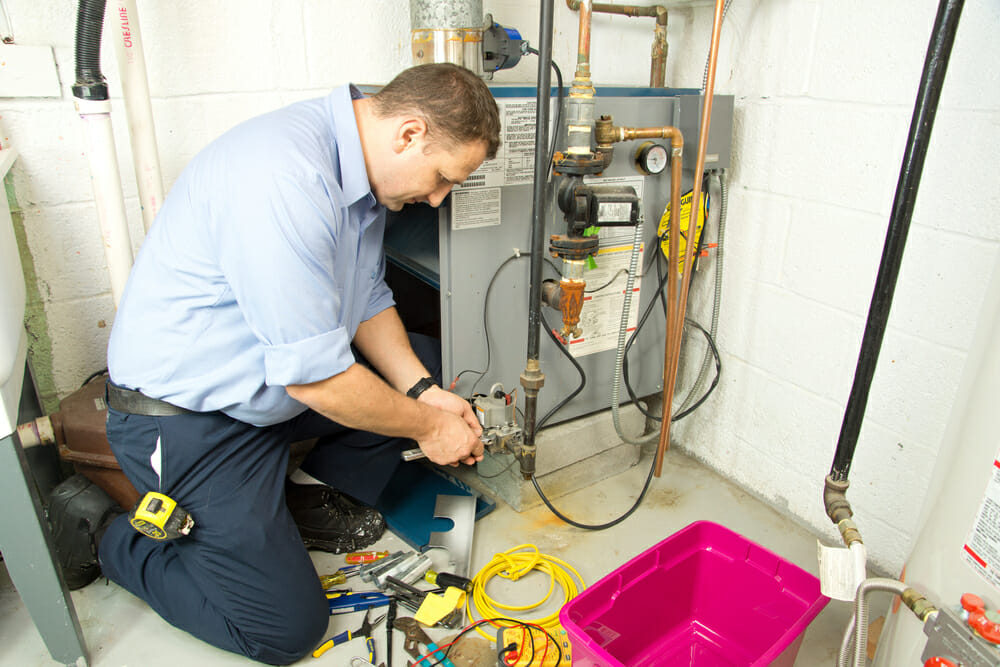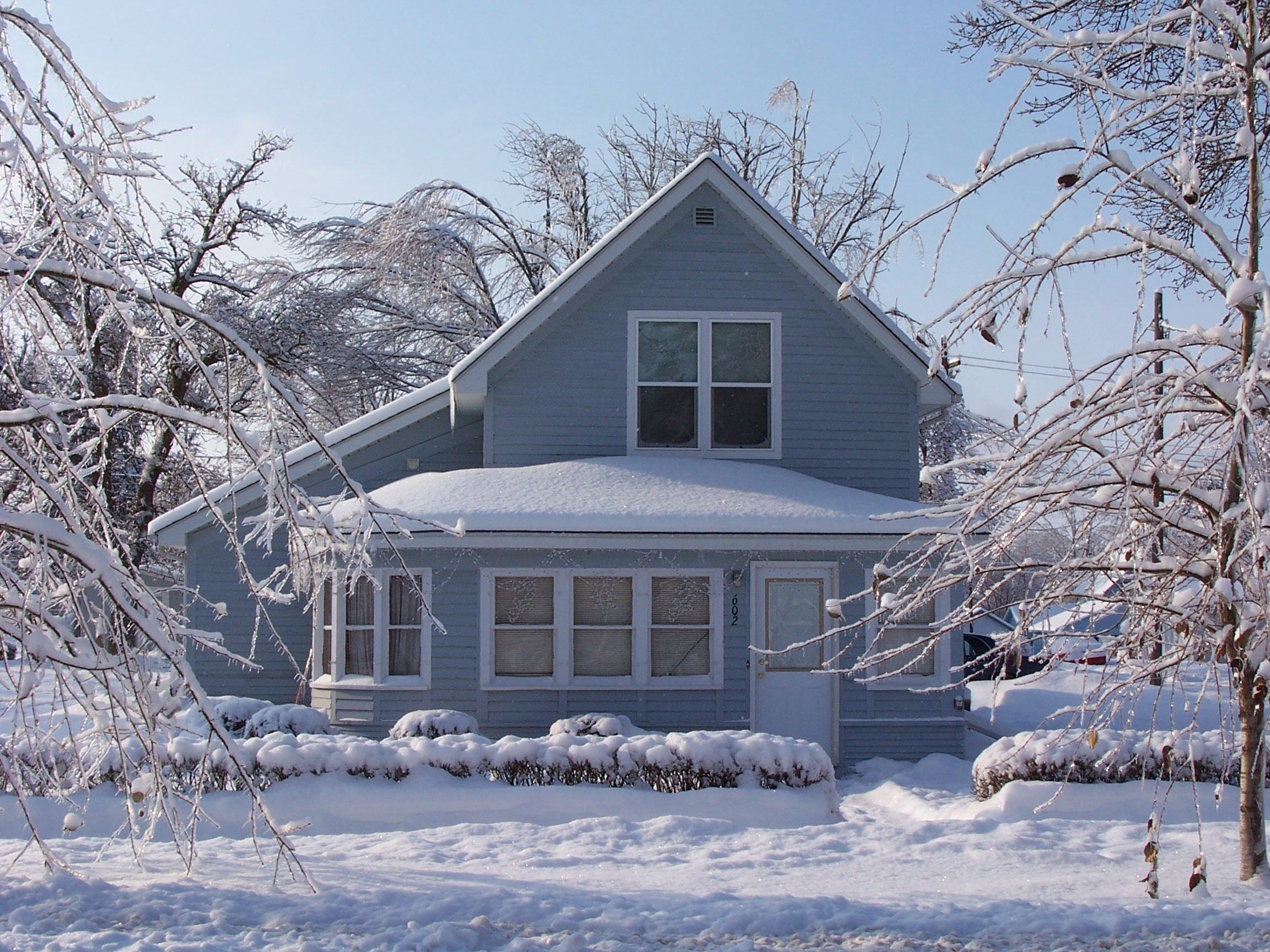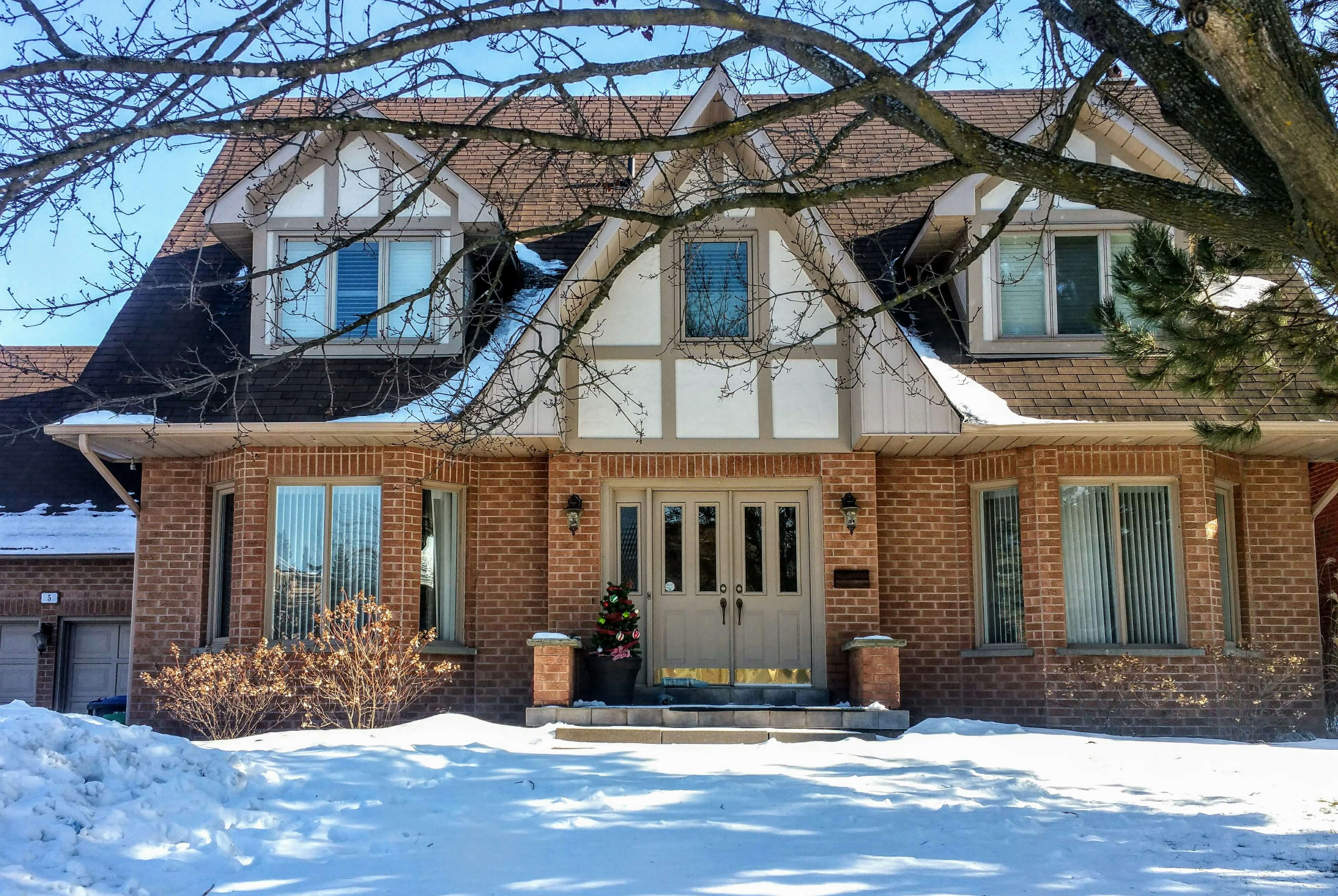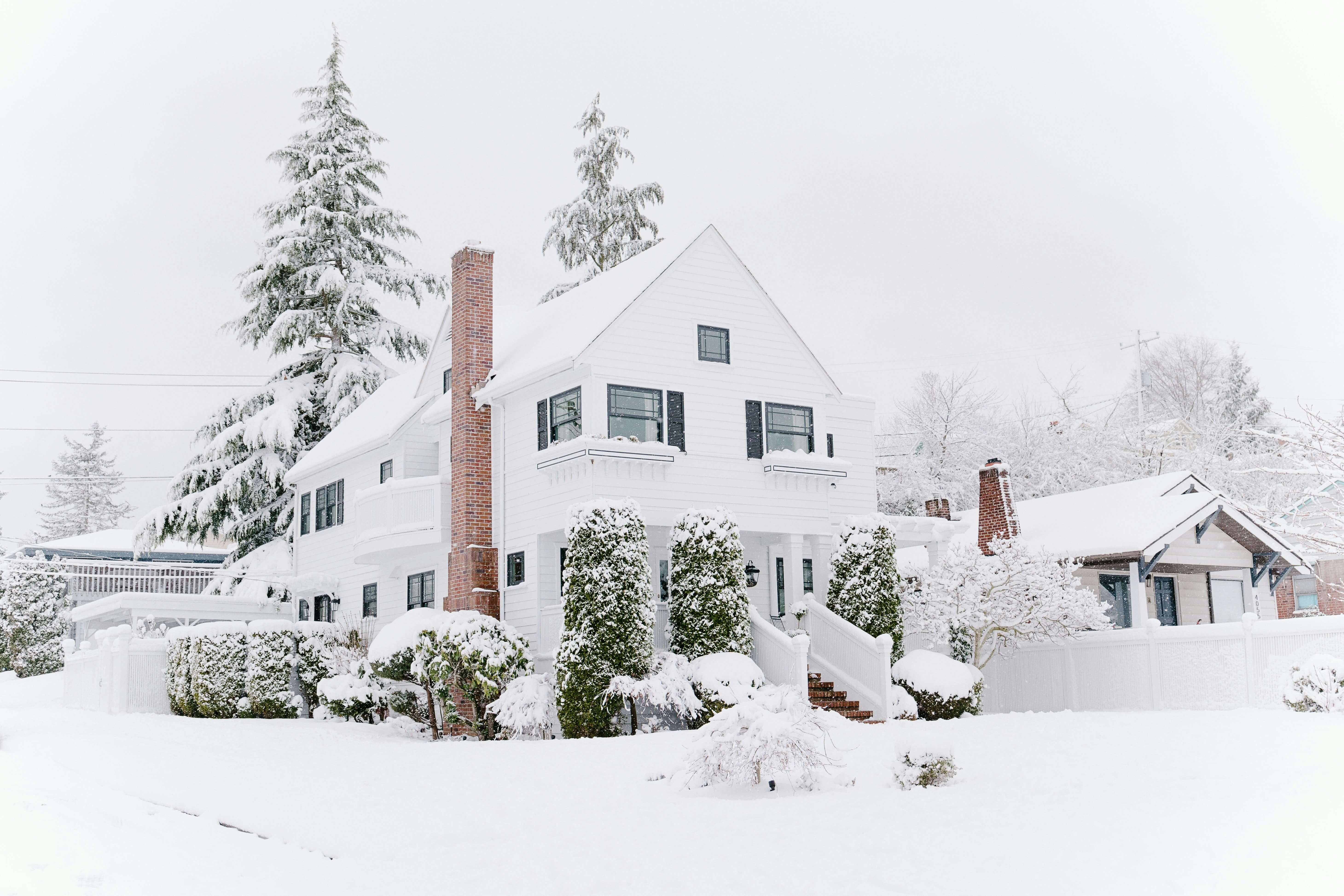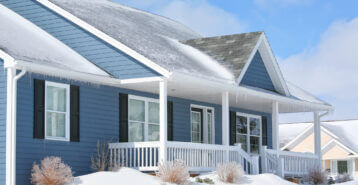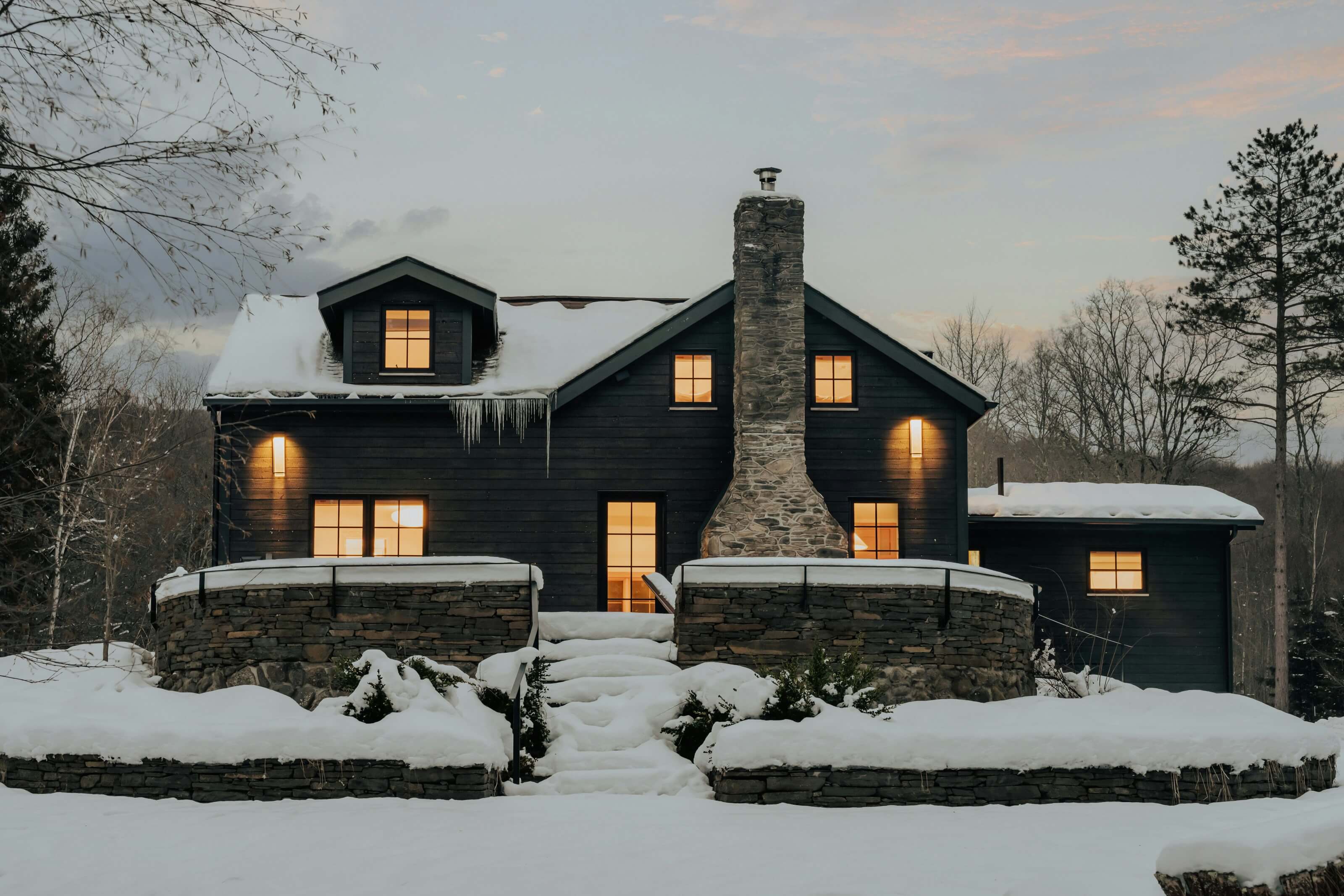What Is a Solid-Fuel-Fired Furnace?
Solid-fuel furnaces burn wood, pellets, coal, or even biomass in a combustion chamber to generate heat. They don’t rely on oil, natural gas, or electricity like other furnace types. You won’t find these furnaces in common living spaces; they distribute heated air throughout the home through a network of ducts. This makes them different from appliances such as pellet stoves or fireplace inserts, which are placed in living areas such as family rooms and emanate heat directly from the appliance. Since these furnaces use combustible materials as fuel, they require chimneys to carry off the smoke and gases the combustion process generates.
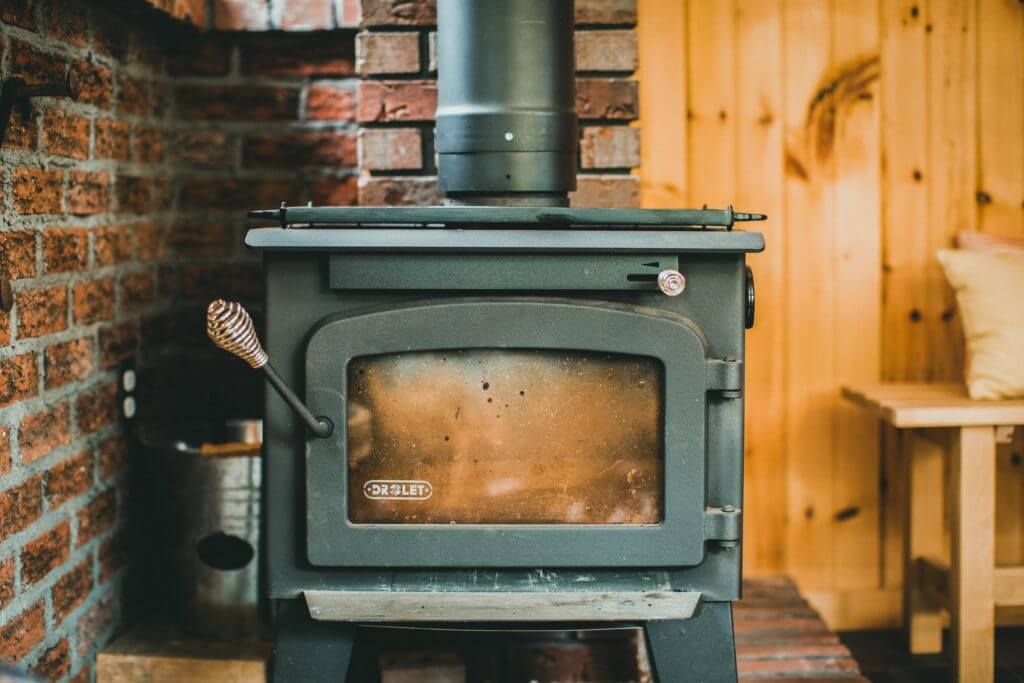
They are an excellent choice for secondary heat sources or primary heat sources for homes or outbuildings that aren’t connected to the energy grid. Modernize created this guide to solid-fuel furnaces to help homeowners understand the unique benefits these types of furnaces offer, potential drawbacks, costs, and more. Read on to learn more about how you can use solid-fuel heaters to offset energy costs and increase the comfort of your home in colder months.
Types of Solid-Fuel Furnaces
Considering adding a solid-fuel furnace to your home? You have options.
Coal-Burning Furnaces
Humans have used coal as a fuel source for heating and cooking for centuries. It reached its peak popularity in the 1880s, but it’s still used in homes across the eastern U.S.
Coal-fired furnaces generate heat by burning either anthracite or bituminous coal inside the combustion chamber. The former is between 86% and 97% carbon, resulting in greater efficiency. The latter is between 45% and 86% carbon, but it is the most common type of coal in the U.S.
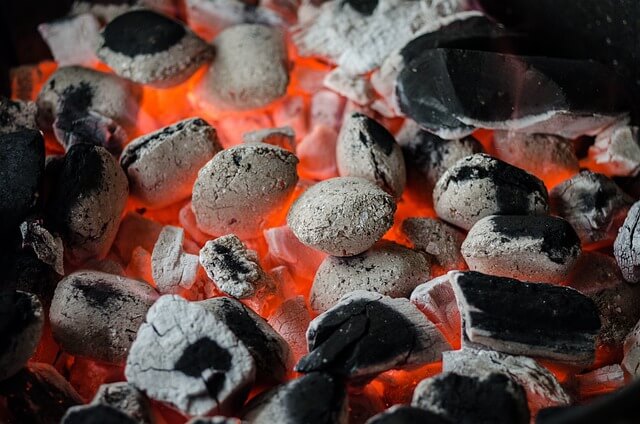
Wood-Burning Furnaces
Forced-air wood-burning furnaces work just like gas, oil, or electric furnaces except they burn wood as a fuel source. These furnaces must be loaded manually by placing wood inside the combustion chamber. Your home distributes the heat throughout its duct system or by a blower inside the appliance.
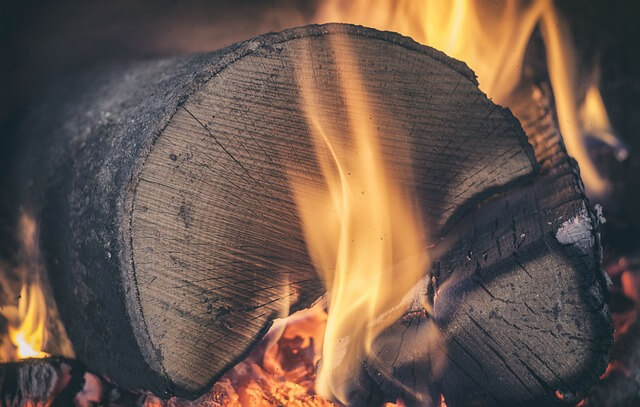
Other Types of Solid Fuels
Wood and coal aren’t the only fuels used in solid-fuel-fired furnaces, but they are the most common. Here are two other alternative fuel sources:
- Corn: Corn stoves use dried corn kernels as a fuel source. Corn kernels contain both ethanol and oil, so they are a clean-burning fuel source.
- Biomass: Biomass is an umbrella term that describes a range of plant- or animal-based organic fuel sources. These could include corn cobs, wood chips, and sawdust, or it could be a mix of animal, agricultural, household, and industrial waste.
Biomass fuels have grown in popularity because they are renewable, environmentally friendly, inexpensive, and easy to source. They generally require larger storage space, however, as well as larger furnaces.
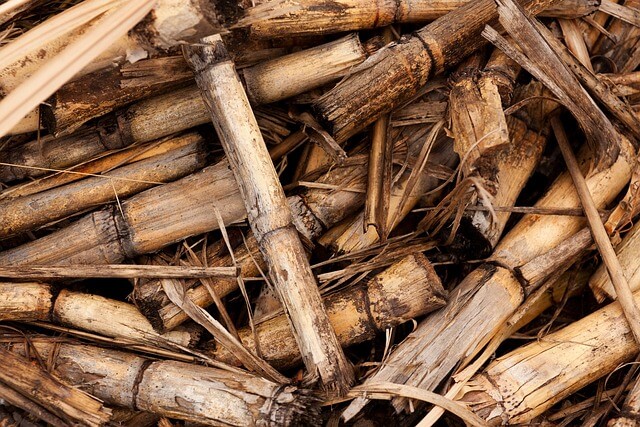
How Much Do Solid-Fuel-Fired Furnaces Cost?
Solid-fuel furnaces typically cost much more than common gas or oil-fired furnaces. Homeowners also have to take into account the ongoing costs of buying wood unless they have access to a readily available supply on their properties.
| System Type | Typical Installed Cost | Typical Home Size Served | Notes |
|---|---|---|---|
| Outdoor Wood Furnace | $9,000 to $16,000 | 2,000- to 3,000-square-foot homes | Larger firebox; fewer reloads. |
| Wood Gasification Furnace | $10,000 to $20,000 | 2,000- to 3,000-square-foot homes | Higher efficiency; higher upfront cost. |
| Indoor Wood Furnace or Boiler | $2,000 to $5,400 | Varies by climate and insulation | Manual loading; uses existing ducts or hydronics. |
| Coal-Fired Furnace | $3,200 to $9,500 | Varies by climate and insulation | Smaller units sit at the lower end of the range. |
Wood-Burning Furnace and Boiler Costs
On average, homeowners can expect to pay between $9,000 and $16,000 to have a new outdoor wood furnace installed. Wood-fired burners that use the highly efficient gasification process to generate heat are likely to cost between $10,000 and $20,000. These prices are for models that can heat a 2,000- to 3,000-square-foot home, so costs could be lower if your heating needs are less. A new wood-fired indoor furnace or boiler, meanwhile, costs between $2,000 and $5,400 installed.
Coal-Burning Furnace Costs
Homeowners who have easy access to coal to power their furnaces and are eyeing a new coal-fired furnace can expect to pay between $3,200 and $9,500 to have a unit installed. Costs should be toward the lower end of this range for smaller furnace units.
Coal vs. Wood-Fired Furnaces: Pros and Cons
A lot of factors come into play when considering the decision to use coal or wood for your solid-fuel-fired furnace.
- Storage Space: One single cord of wood measures 4’ wide by 4’ high by 8’ long. That’s a big pile totaling 128 cubic feet. A ton of coal, however, will take up about 40 cubic feet of space.
- Heat Production: Heat generated from wood depends on the species. Red oak is the hottest, burning at about 1,600 degrees Fahrenheit. Softwoods such as pine burn at less than 1,000 degrees Fahrenheit. Anthracite coal, though, burns between 2,500 and 3,500 degrees. Bituminous coal burns at 980 to 2,600 degrees.
- Seasoning: Wood needs to be properly seasoned so it’ll burn at its optimal temperature. Bituminous or anthracite coal don’t.
- Availability: Coal can be hard to find outside the regions where it’s mined. Wood fuels, however, are readily available in most parts of the U.S.
- Cost: The average cost for a cord of wood is about $300. You’ll pay more for seasoned and hardwoods. Wood pellets, meanwhile, typically cost between $5 and $9 for a 40-pound bag. Bituminous coal costs about $100 per short ton, while anthracite coal costs $155 per short ton.
- Chimney Fires: Burning wood emits creosote, a potentially harmful substance that stays in your chimney and requires regular cleaning to avoid a chimney fire. Coal doesn’t have that issue.
- Pollution and Carbon Emissions: Both wood and coal release carbon dioxide into the atmosphere.
- Burning Rate: The average wood-burning home can consume as much as six cords of wood per year. Coal will consume about three tons annually since it burns much hotter.
- Loading and Storage: Expect to load a wood-fired furnace each morning and night. You’ll load a coal furnace every 12 hours.
Understanding Indoor vs. Outdoor Fuel-Fired Furnaces
Both wood and coal-fired furnaces can be placed either inside in remote locations of the home, such as a garage or basement, or outside. Outdoor wood furnaces are typically larger and can be loaded with more wood so they don’t have to be restocked as often. These furnaces may also require heat exchangers to exchange heated water for hot air that’s blown throughout the home.
Indoor forced-air, solid-fuel-fired furnaces should adhere to strict installation requirements that include:
- Install in a one-hour fire-rated room with an entry door leading to the outside.
- Ensure hot-air ducts and cold-air returns end no less than eight feet above the floor.
- Make sure air for the combustion process draws from outside sources.
- Inspect and clean chimneys and vent pipes annually.
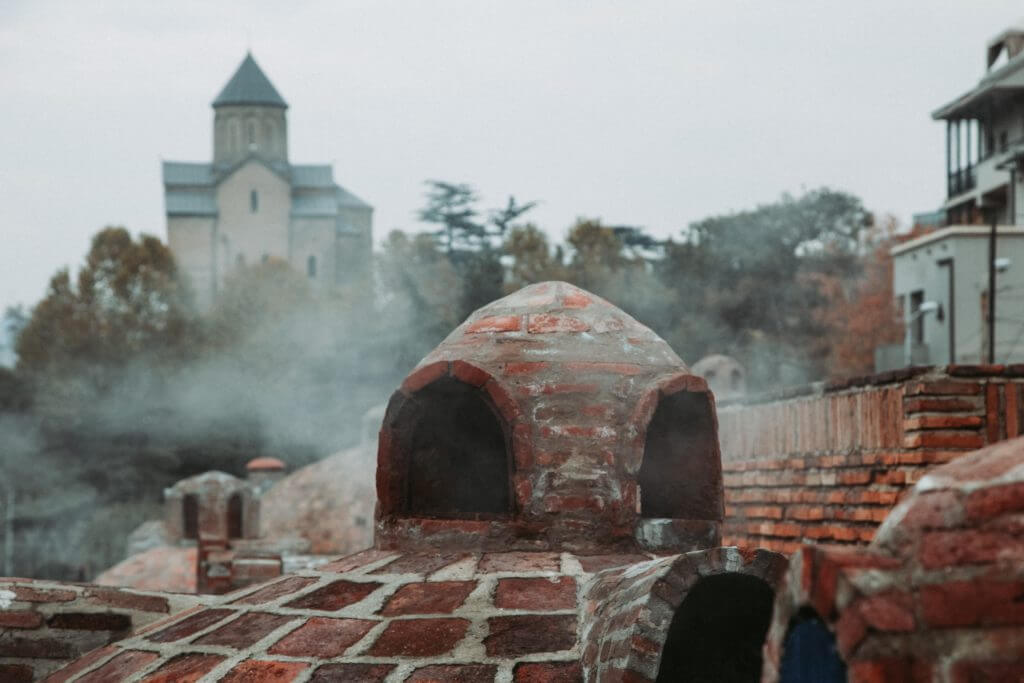
Clearances for Fuel Burning
Solid-fuel furnaces require minimum clearances around the appliance to ensure safety. Here are some specifications to keep in mind:
- Create a minimum three-foot safe zone around the appliance for child safety.
- Minimum of 36” from the nearest combustible surface unless using heat shields.
- 18” from the flue to wall surfaces, and also along the length of the chimney stovepipe in all directions.
A licensed installer will be familiar with the exact specifications for your appliance and region.
Optimizing Solid-Fuel Combustion
Just because you have installed a solid-fuel furnace does not necessarily guarantee savings on energy costs. Make sure to optimize for fuel flow and combustion. Follow these tips:
- Continuous Fuel: Load fluctuations can reduce furnace efficiency. Always make sure the furnace has a continuous fuel source for uniform feed and combustion rates.
- Under-Fire and Over-Fire Airflow: Controlling the air/fuel ratio is crucial to achieve maximum efficiency. The best approach for under-fire air is to have a control system in place that regulates air and fuel input. Similarly, introducing too much over-fire air results in heat loss and decreased efficiency. Find the balance between your system’s oxygen and carbon monoxide levels by taking readings or have a professional optimize your system.
Solid-Fuel Furnace Maintenance
You will have to perform routine maintenance to keep your solid-fuel-fired furnace clear of ash.
Regardless of whether you burn coal or wood, expect to clear the firebox at least once a month unless your appliance has an auger system that pushes out the ash. Even then, you will still likely have to perform regular cleanings to remove ash from the sides of the firebox.
Wear a dust mask to avoid inhaling any ash particles as you shovel ash out of the appliance. If your unit also heats water, you will have to inspect the anode rod annually. Lastly, wood stoves generate creosote during the combustion process. Make sure to clean the chimney on an annual or semiannual basis to reduce chances of a fire.
Compare top-rated HVAC pros in your area.
Read real homeowner reviews, explore qualifications, and view promotions. Modernize makes it easy to browse professionals and find one that will be perfect for your project.





